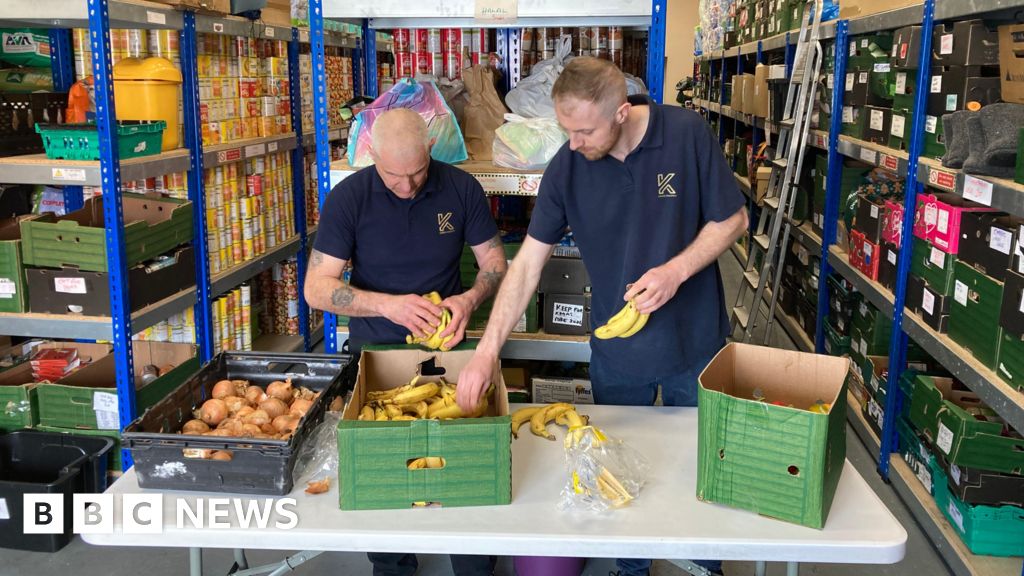Essential Strategies for Maintaining Cohesion in Remote Teams

Key Takeaways

- Cohesion is Crucial: Maintaining cohesion in remote teams enhances productivity, effective collaboration, and overall business growth.
- Engagement Boosts Morale: Strong team cohesion increases employee engagement, leading to higher morale and better retention rates.
- Effective Communication: Regular check-ins and clear communication practices are vital for preventing misunderstandings and fostering a supportive culture.
- Utilize Collaboration Tools: Implementing the right tools can improve transparency, streamline tasks, and facilitate real-time communication among team members.
- Build Trust: Establishing trust through recognition programs, team-building activities, and regular check-ins enhances collaboration and drives productivity.
- Leadership Matters: Active leadership that demonstrates commitment, provides guidance, and encourages open communication is essential for nurturing team cohesion in remote settings.
In today’s digital age, remote teams are becoming the norm rather than the exception. While this shift offers flexibility and access to global talent, it also presents unique challenges in maintaining team cohesion. You might find that without the traditional face-to-face interactions, building strong relationships and fostering a sense of belonging can be tough.
To keep your remote team engaged and united, it’s essential to implement strategies that promote collaboration and communication. By focusing on shared goals and creating opportunities for connection, you can enhance teamwork and ensure everyone feels valued. Let’s explore effective ways to maintain cohesion in your remote team, so you can thrive in this evolving work landscape.
Importance Of Cohesion In Remote Teams

Cohesion in remote teams significantly impacts productivity and overall business growth. Maintaining a united team fosters collaboration and enhances communication skills, essential for achieving business goals.
Benefits Of Strong Team Cohesion
- Improved Performance: Cohesive teams perform better due to enhanced collaboration, which streamlines workflow and allows for efficient project management.
- Increased Employee Engagement: Team members engaged in cohesive environments feel valued, contributing to higher morale and retention rates.
- Enhanced Problem-Solving: Strong team cohesion encourages diverse perspectives during decision-making, leading to effective conflict resolution and innovative solutions.
- Effective Communication: Cohesion strengthens communication skills, ensuring that messages and feedback flow smoothly, improving time management and meeting deadlines.
- Supportive Culture: A united team fosters a supportive culture, promoting employee development and training initiatives that align with business objectives.
Challenges Faced In Remote Environments
- Isolation and Loneliness: Team members often experience feelings of isolation, which can hinder collaboration and affect performance.
- Communication Barriers: Lack of face-to-face interaction creates challenges in conveying messages, leading to misunderstandings and decreased operational efficiency.
- Diverse Time Zones: Different time zones complicate scheduling and may affect the consistency of team workflow and project timelines.
- Technological Dependency: Reliance on technology solutions can lead to issues if tools fail, impacting team cohesion and overall productivity.
- Cultural Differences: Remote teams often consist of diverse cultures, which can create challenges in aligning everyone with general business strategy, requiring effective delegation and understanding.
Strategies For Maintaining Cohesion In Remote Teams

Maintaining cohesion in remote teams is vital for small businesses. It boosts productivity and aligns efforts with business goals. Here are key strategies to enhance team cohesiveness.
Effective Communication Techniques
Fostering effective communication strengthens your remote teams. Implement regular team check-ins to discuss priorities, challenges, and feedback. Utilize video conferencing for personal interaction, which enhances connection. Encourage open dialogue by creating a culture where team members feel comfortable sharing ideas and concerns. Use clear, concise language in all communications to prevent misunderstandings. Adopt the practice of active listening during discussions, ensuring each team member feels heard and valued.
Tools To Enhance Collaboration
Using the right tools increases collaboration among remote team members. Leverage project management software for task tracking and transparency. Utilize cloud-based platforms for file sharing, allowing easy access to essential documents from anywhere. Consider communication tools that facilitate real-time messaging, fostering ongoing conversations. Integrate workflow automation tools to streamline repetitive tasks, freeing up time for more strategic activities. Regularly evaluate these tools to ensure they align with your evolving business processes and promote operational efficiency.
Building Trust Among Team Members

Building trust among team members proves essential for effective collaboration in small business remote teams. Trust fosters communication and a sense of belonging, driving productivity and business growth.
Activities To Foster Connection
Incorporate activities that encourage team connection. Consider these ideas:
- Virtual Team Building: Engage in online activities that promote interaction and fun, such as trivia games or virtual coffee breaks. This builds rapport among team members.
- Regular Check-Ins: Schedule weekly meetings to discuss not just work tasks, but also personal updates. These check-ins bolster relationships and allow for informal bonding.
- Recognition Programs: Implement programs to recognize individual contributions. Recognizing achievements fosters a culture of appreciation and boosts morale.
Establishing Clear Expectations
Establishing clear expectations is vital for enhancing accountability within remote teams. Here are key elements to implement:
- Define Roles: Clearly outline each team member’s responsibilities. This clarity ensures everyone knows their tasks, reducing confusion and increasing workflow efficiency.
- Set Achievable Goals: Create specific, measurable goals tied to business objectives. Aligning individual goals with business goals enhances motivation and focus.
- Promote Open Communication: Encourage team members to voice concerns and suggestions. Open communication streamlines decision-making and cultivates a supportive work environment.
Implementing these strategies enhances trust and cohesion among your team, driving improved business operations and performance.
Role Of Leadership In Team Cohesion

Leadership is essential for maintaining team cohesion in remote settings. By actively managing your team’s dynamics, you foster a supportive environment that enhances productivity and business growth.
Leading By Example
Leading by example is crucial for small businesses. When you model transparency and dedication, team members are more likely to follow suit. Demonstrating strong communication skills, commitment to project management, and effective time management creates a culture of accountability. By showing how you prioritize tasks and meet deadlines, your team learns to emulate those behaviors. Additionally, when you address challenges openly, it encourages a problem-solving mindset among your employees, further enhancing cohesion and collaboration.
Providing Support And Guidance
Providing support and guidance builds trust and strengthens team dynamics. Regular check-ins and constructive performance reviews help to identify areas for development and celebrate successes. Implementing employee training programs ensures that staff members feel empowered and equipped to contribute to business processes effectively. When you are approachable and willing to assist, it fosters an environment where everyone feels valued. Utilizing technology solutions and software tools can streamline workflows, making it easier for your team to collaborate and communicate efficiently, thus enhancing operational efficiency and cohesion.
Conclusion

Maintaining cohesion in remote teams is essential for achieving success in today’s digital landscape. By prioritizing communication and collaboration you create an environment where team members feel connected and valued. Implementing effective strategies like regular check-ins and team-building activities fosters trust and accountability.
As a leader you play a crucial role in modeling the behaviors that promote a supportive culture. Embrace technology to bridge gaps and ensure everyone stays engaged. Remember that a cohesive team not only drives productivity but also enhances overall job satisfaction. With the right approach you can cultivate a thriving remote team that meets your business goals and adapts to the challenges of a virtual workspace.
Frequently Asked Questions

What are the benefits of remote teams?
Remote teams offer flexibility, access to a global talent pool, and reduced overhead costs. They enable businesses to adjust work hours to fit different time zones, which can lead to increased productivity and employee satisfaction.
What challenges do remote teams face?
Remote teams often encounter issues such as feelings of isolation, communication barriers, time zone differences, and cultural variations. These challenges can impact team dynamics and make collaboration more difficult.
How can remote teams maintain cohesion?
To maintain cohesion, remote teams can focus on regular communication through check-ins, utilize collaboration tools for sharing resources, and organize virtual team-building activities to foster connections and trust among team members.
Why is team cohesion important for remote teams?
Team cohesion is crucial for remote teams as it enhances productivity, boosts employee engagement, and improves problem-solving abilities. Strong cohesion helps create a supportive culture that drives business growth.
What role does leadership play in remote team success?
Leadership is vital in remote teams as effective leaders model transparency, provide support, and encourage open communication. They help build trust and ensure that team members feel valued, ultimately improving overall team dynamics.
Image Via Envato
This article, "Essential Strategies for Maintaining Cohesion in Remote Teams" was first published on Small Business Trends
What's Your Reaction?
 Like
0
Like
0
 Dislike
0
Dislike
0
 Love
0
Love
0
 Funny
0
Funny
0
 Angry
0
Angry
0
 Sad
0
Sad
0
 Wow
0
Wow
0
































































































